Advertisements
Advertisements
Question
In the figure, chords AE and BC intersect each other at point D. If AD = BD, show that AE = BC.
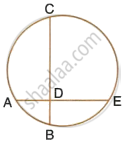
Solution
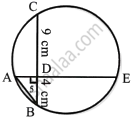
Join AB.
If AD = BD ...(i)
We know that:
AD × DE = BD × DC
But AD = BD
Therefore, DE = DC ...(ii)
Adding (i) and (ii)
AD + DE = BD + DC
Therefore, AE = BC
APPEARS IN
RELATED QUESTIONS
AB and CD are two equal chords of a circle with centre O which intersect each other at right
angle at point P. If OM⊥ AB and ON ⊥ CD; show that OMPN is a square.
In the following figure, O is the centre of the circle. Find the values of a, b and c.

In the following figure, O is the centre of the circle. Find the values of a, b, c and d.
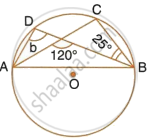
In the following figure, O is the centre of the circle. Find the values of a, b, c and d
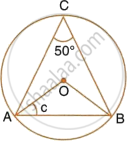
In the given figure, I is the incentre of ΔABC. BI when produced meets the circumcircle of ΔABC at D. ∠BAC = 55° and ∠ACB = 65°; calculate:
- ∠DCA,
- ∠DAC,
- ∠DCI,
- ∠AIC.
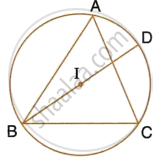
In following fig., chords PQ and RS of a circle intersect at T. If RS = 18cm, ST = 6cm and PT = 18cm, find the length of TQ.

The line joining the midpoints of two chords of a circle passes through its center.
Prove that the chords are parallel.
The length of the common chord of two intersecting circles is 30 cm. If the diameters of these two circles are 50 cm and 34 cm, calculate the distance between their centers.
If two chords of a circle are equally inclined to the diameter through their point of intersection, prove that the chords are equal.
Two chords AB, CD of lengths 16 cm and 30 cm, are parallel. If the distance between AB and CD is 23 cm. Find the radius of the circle.
